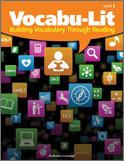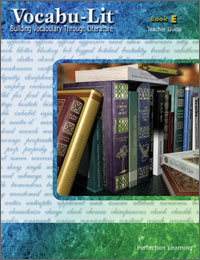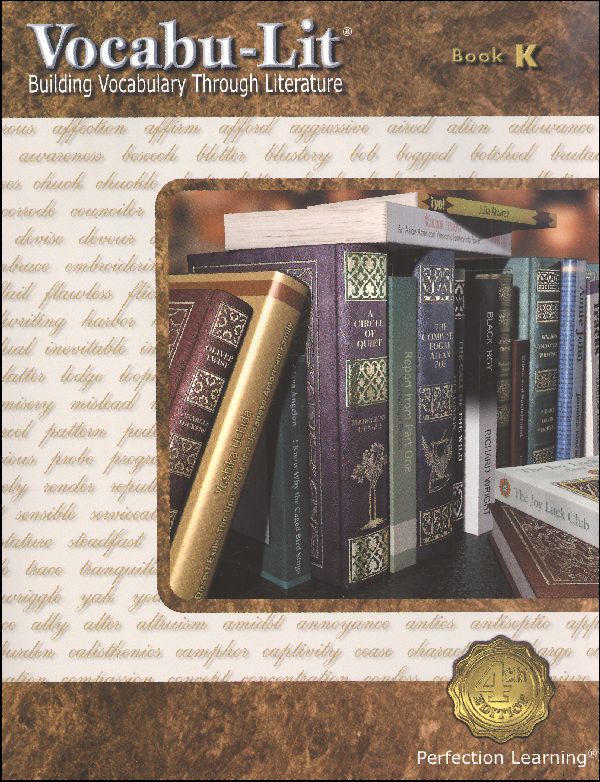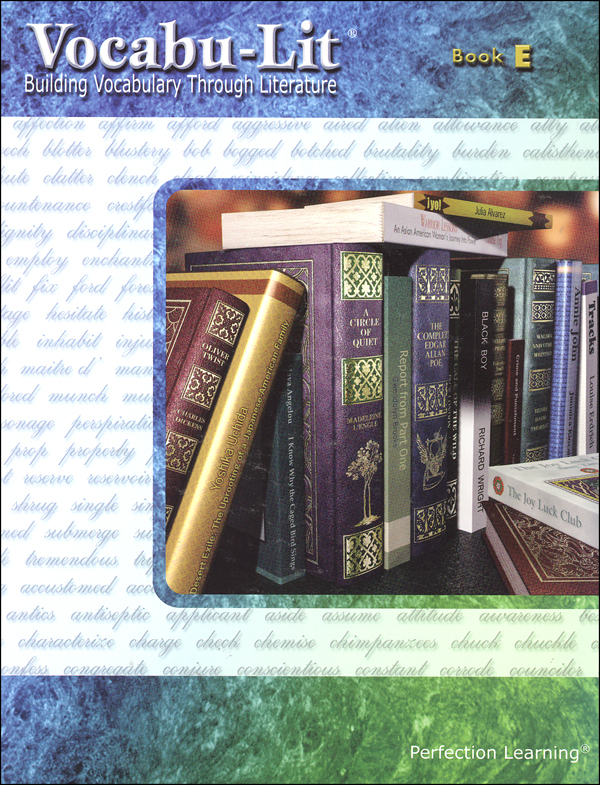The Vocabu-Lit series begins each lesson with an excerpt from a book, story, essay, poem, or speech. Within each literary piece, ten vocabulary words in bold become the focus of each lesson as students encounter the words in a number of ways to develop a nuanced understanding of each word’s meaning. After the literary piece, the layout in the first four books (B through E for grades two through five) differs from that of the rest of the series (books F through K for grades six through eleven).
In book B through book D (not including book E), students first copy definitions for each word from the dictionary in the back of their books. The next exercise focuses on context clues as students fill in the blanks with the correct words; in Books C and D, for grades three and four, students also circle the context clue within the sentence. Students identify synonyms and antonyms and work with word relationships in the next two sections. There are still two more activities for each lesson! One of them uses a graphic organizer to work with words. For example, one graphic organizer presents a word web for students to identify words or phrases from the story that relate to a particular topic. The final activity is a puzzle of some sort that uses the words from that week’s list. Book B exercises differ from those in the other two lower-level books. They are simpler with students doing such things as circling yes/no answers or selecting one of two answers by checking a box. They skip the graphic organizers, but they do include puzzles and some composition activities.
 Book E steps up the level of difficulty for fifth graders with more lessons and some activities more similar to those in books F through K. However, it has puzzles, games, and drawing activities for the final lesson exercise rather than introducing a writing assignment. Books B through E each have three or four reviews and no assessments. You will need the separate test booklets for testing if you think it worthwhile to test.
Book E steps up the level of difficulty for fifth graders with more lessons and some activities more similar to those in books F through K. However, it has puzzles, games, and drawing activities for the final lesson exercise rather than introducing a writing assignment. Books B through E each have three or four reviews and no assessments. You will need the separate test booklets for testing if you think it worthwhile to test.
Books F through K for grades six align fairly well with the Common Core State Standards, but they should appeal even to those who oppose the Common Core. Students begin by reading an excerpt from fiction, non-fiction, speeches, and primary sources—both classic and contemporary.
In the first two exercises for each week's lesson, students work with context clues and prior knowledge to try to write definitions of the ten master words in that lesson. This serves as sort of a pre-test. Students then look up and write the definitions from a dictionary, comparing these with their own definitions. The third exercise has students work with the words in different contexts as well as with antonyms and synonyms in a variety of ways. Students are encouraged to consult a dictionary as needed. The next exercise seems easier as students fill in the blanks of ten sentences with the correct word. The fifth and sixth exercises vary from week to week. They include work with analogies, shades of meaning, words with multiple meanings, figurative language, root words, affixes, synonyms, idioms, foreign words and phrases, etymologies of words, oxymorons, and euphemisms. Each week's lesson concludes with an interesting writing assignment. The writing assignments are all unique, reflecting the many different modes of writing. Some students will need assistance with composition skills for some assignments. The writing assignments are worth using as a substantial part of a student's composition work.
There are six review lessons in books F through K—one after every five lessons, and each review is followed by an assessment. You will likely spend at least one or two days on the review and a few days on the assessment. Both reviews and assessments use a variety of question formats. Reviews often require students to write full sentence responses. Assessments include questions in the same formats that students will encounter on both the PARCC (Partnership for Assessment of Readiness for College and Careers) and Smarter Balanced Assessment Consortium exams—exams tied to the Common Core. In addition, assessments always include a written assignment. Interestingly, for the assessment composition tasks students are supposed to work through the writing process with peer review, revisions, and rewrites. And some writing assignments require research. Clearly, these extend the time required for the assessments beyond a single session.
For all levels, teacher editions are the same as student workbooks but with overprinted answers.
You can easily skip the teacher edition for second grade, but you will probably want them for other levels to save you time even if you can easily figure out the answers yourself. Separate test booklets are available for grades five and up, but you shouldn't need them.
I particularly like this series for a number of reasons: the use of literary excerpts, the variety of activities, the selection of words (challenging yet more practical than in some other resources), and reasonable cost.
Sample pages are available on the publisher's website.




















